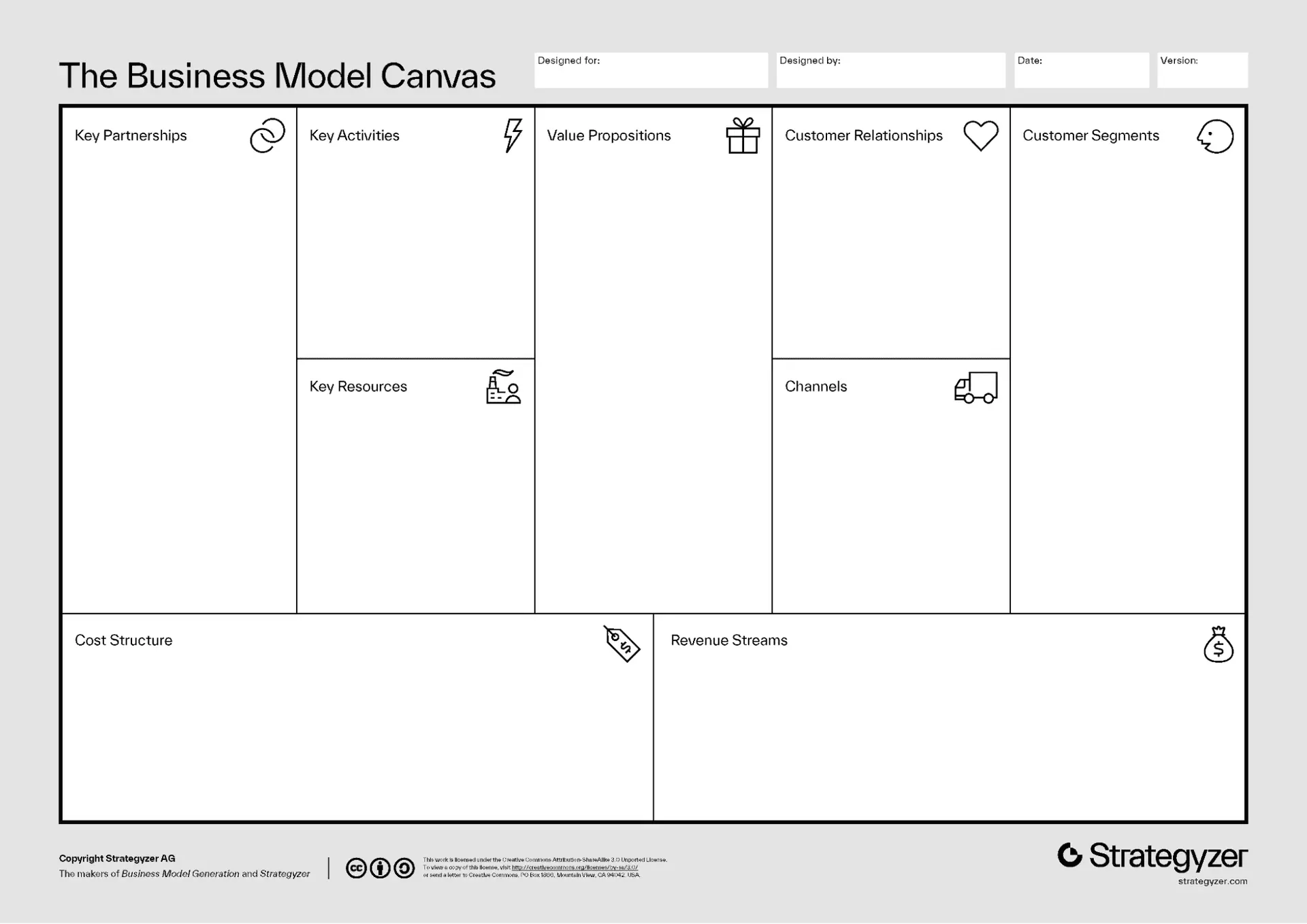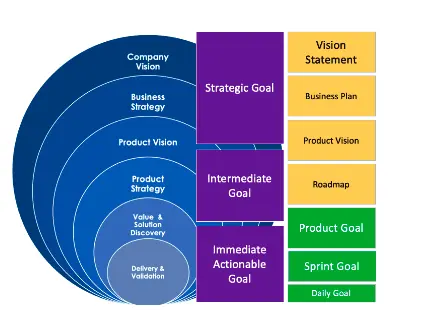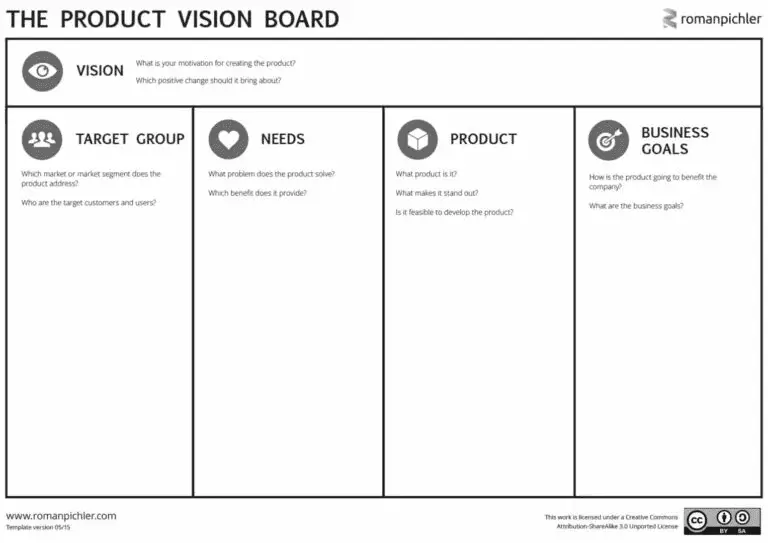January 10, 2024 - 7 minutes read
Product Management
Product Vision: Aligning Organizational Goals for Strategic Success
Imagine you're building something brand new. It's easy to get lost in a million of little decisions or distracted by customer requests, right? That's where your Product Vision comes in. At 25Friday, we recently hosted our 6th Product Circle for product people, delving into the complexities of product vision; a subject often underestimated but crucial for success. This article serves as a comprehensive recap, exploring the prerequisites for a robust product vision, the theoretical underpinnings that make it indispensable, and practical insights into crafting a compelling vision.

AUTHOR

Sybren van Putten
Sr. Product Consultant
Prerequisites
Company Vision and Mission
A solid Product Vision should align seamlessly with the overarching Company Vision. The company's long-term goals, its values, and its aspirations serve as the foundation upon which the Product Vision is (or should be) built. This alignment ensures that your product contributes meaningfully to the organization’s overall objectives, fostering a coherent and unified approach.
The company mission serves as a guiding star, directing the organization toward its intended purpose and impact. An effective Product Vision, in turn, should be an extension of this mission, telling your teams how the product will fulfill the company's broader objectives. Establishing a clear connection between the product's mission and the company's mission is essential for cultivating a sense of purpose and direction.
The Company Vision outlines where you want to be. It communicates both the purpose and values of your business. Sometimes referred to as “why do you exist”.
To you as a product professional, this implies that having a Company Vision and/or Mission are prerequisites for crafting the Product Vision. If either of these is unclear or not set at all, please don’t waste your time and head to your leadership team: the starting point is in their hands.
Recommended tools and models
Utilizing frameworks can be instrumental in aligning the Product Vision with broader business considerations. These tools provide you with a holistic view of the business, prompting thoughtful considerations about value propositions, customer segments, and revenue streams. Additionally, other tools that complement this framework can enhance the strategic planning process.
Business Model Canvas
At 25Friday, the Business Model Canvas introduced by Alexander Osterwalder is our personal favorite. It proves invaluable in visualizing key elements of a business. It facilitates a comprehensive exploration of a company's value proposition, customer segments, channels, and revenue streams. Involving this canvas in the Company Vision context allows for a structured examination of how the product contributes to the overall business model.

Source: strategyzer.org
Other tools
Beyond the Business Model Canvas, other strategic tools and models can fulfill a similar role in refining the company's vision and ensuring its alignment with the product. Depending on the industry and context, well-known tools such as SWOT analysis, PESTLE analysis, or the Value Proposition Canvas provide the insights and perspectives you need.
Product Vision
Now that the prerequisites for a Product Vision are clear, let’s dive deeper into the Product Vision theory. Part of the product vision is a forward-looking statement that articulates the desired future state of a product. It encapsulates the product's purpose, the value it delivers to users, and its role within the market. It serves as a source of inspiration for the development team, aligning their efforts towards a shared goal, and provides clarity to stakeholders about the product's long-term trajectory.
As displayed in the diagram below, the Product Vision lives between Business Strategy and Product Strategy, being a product of Company Vision (and mission). And down the line, the Product Roadmap is a product of the Product Vision.

Source: scrum.org
The product vision is an ultimate future state serving as a North Star. It is the product’s final destination.
Great Product Vision and how it is different from the Company Vision
The Product Vision is characterized by its ability to inspire and motivate, serving as a beacon for both the team working on it and the customers it aims to serve. It should not only be aspirational but also flexible, allowing for interpretation and adaptation as the product evolves over time. A great Product Vision places a strong emphasis on addressing a specific problem, clearly outlining the value it brings to the target audience. By combining inspiration, adaptability, and a focus on solving real-world challenges, the Product Vision will resonate with the needs of its intended users.
The Product Vision goes beyond features and functionality. In fact, we urge you to not include specifics like these in your Product Vision for the simple reason that doing so will extend the shelf life of your Product Vision.
Distinguishing a good Product Vision from a Company Vision involves recognizing their unique scopes. A Product Vision focuses on specific solutions to targeted problems while aligning seamlessly with the broader Company Vision. Unlike a Company Vision, which spans diverse business areas, a Product Vision is more precise. Also, Company Visions are often communicated openly and externally, while Product Visions have a slightly stronger internal focus. Try finding Product Visions using Google. What you’ll find is often Company Visions.
Why is a product vision important to have
A well-defined Product Vision serves as a compass for the product development journey. It not only guides decision-making throughout the development lifecycle but also fosters a shared understanding and commitment among team members. By offering a clear direction, the Product Vision helps in prioritizing features, making strategic decisions, and responding effectively to evolving market conditions.
Who is responsible for the product vision
Obviously the lead is with the product manager involved with the product, or part of the product. The department plays a central role in crafting and communicating everything around the Product Vision and making sure it is aligned with all stakeholders. Ultimately, the vision is not the story of the PM but is a collaborative effort that considers input from various stakeholders. Cross-functional teams, including designers, developers, and marketing experts, contribute diverse perspectives to ensure a holistic and feasible Vision. In the end, the responsibility for crafting a compelling vision and championing this Product Vision rests with the entire team.
Crafting the Product Vision
Artifacts in the Product Vision Landscape
Crafting a great Product Vision involves creating artifacts that communicate the Vision effectively. These artifacts may include Vision Statements, User Personas, User Journeys, and Prototypes. Each of these elements contributes to a comprehensive narrative that conveys not only what the product aims to achieve but also how it will enhance the user experience.
By now, you are probably starting to realize that crafting a Product Vision is not something to do on a Friday afternoon. As a matter of fact, this iterative process may take multiple days and often spreads out over weeks.
The Product Vision Board
Our 25Friday go-to method - The Product Vision Board developed by Roman Pichler - is a structured framework that guides teams through key aspects such as target customers, needs, and benefits. It prompts the exploration of crucial elements like the product's purpose, target users, and unique selling propositions. By using this canvas, teams can collaboratively define and refine their product vision, ensuring that it remains aligned with both user needs and business objectives.

Source: romanpichler.com
Additionally, other models, such as the Lean Canvas or Empathy Map, can provide valuable insights into user motivations and pain points, enriching the overall Product Visioning process.
Further down the line, we suggest supplementing the Product Vision Canvas with other tools like the Impact-Effort Matrix or the Feature Prioritization Matrix to assist your teams in evaluating and prioritizing features based on their potential impact and development effort, contributing to your newly crafted, actionable Product Vision.
Product Vision Statement Formula
Up until now, we have argued some of the essentials required for effectively crafting a Product Vision or identifying the gaps in your company's initial attempts.
To facilitate a seamless commencement, we supply you with a straightforward formula that will methodically organize your thought process when initiating the development of your Product Vision:
The logic here is as follows:
[objective] = [means] + [effect] = [outcome]
More concretely: to [accomplish something], by [creating something], that [does something to its users], [resulting in something]
An example: to revolutionize how business people travel, by creating a globally accessible platform, that promotes sustainable choices, making the world a better place.
Conclusion and recommendation
In summary, a well-defined Product Vision propels your organization strategically, guiding decisions and prioritizing features effectively.
Crafting a compelling Product Vision for a product-led SaaS organization involves aligning it closely with the overarching Company Vision and Mission. Utilize recommended tools such as the Business Model Canvas and complementary models like SWOT analysis for strategic alignment.
A successful Product Vision is aspirational, flexible, and focused on addressing specific problems with tangible value for the target audience. It serves as a guiding compass throughout the products’ lifecycle, aiding decision-making and fostering team understanding.
Responsibility for the Product Vision is ultimately with the leading Product Manager however the process of uncovering the details is collaborative and involves cross-functional teams.
Use dedicated tools like the Product Vision Canvas and other models such as Lean Canvas for streamlined and aligned vision crafting. Extend these with Product Vision Statements and accompanying Statements and User Personas to form a compelling and effective narrative.
Product Vision Strategy
Aligning Product and Business Goals
Crafting a Product Vision
Effective Product Management
Product Vision Board
Product Development Guide
Strategic Product Success
Collaborative Product Vision
Business Model Canvas
Product Vision Techniques
Aligning Company and Product Vision
Product Vision Importance
Creating a Product Vision
Cross-Functional Product Teams
Product Vision Frameworks
Related posts

Product Management
May 5, 2025
-
10 min read
Steer product development with the right goal-setting framework
SaaS product teams need clear direction. This guide explores essential goal-setting frameworks like OKR, North Star Metric, HEART & AARRR. Understand why they're vital for SaaS success—from boosting retention to powering product-led growth. We compare their pros, cons & ideal uses, helping you select the right framework to connect strategy with execution, avoid the 'build trap' & achieve measurable impact.

Sybren van Putten
Sr. Product Consultant

Product Management
March 20, 2025
-
5 min read
Connecting Product Effort to Business Success
As a product manager in a SaaS scale-up, you’re constantly shipping features, improving user experience, and optimizing workflows. But how often do you step back and ask: is this actually moving the business forward?
As a Product Management consultant, I often find product teams celebrate launches as if shipping features is the goal. But releasing stuff is different from making an impact. Without a clear connection between product effort and business success, teams risk prioritizing the wrong initiatives, struggling to get stakeholder buy-in, and ultimately becoming a cost center rather than the company’s driver of growth.

Sybren van Putten
Sr. Product Consultant